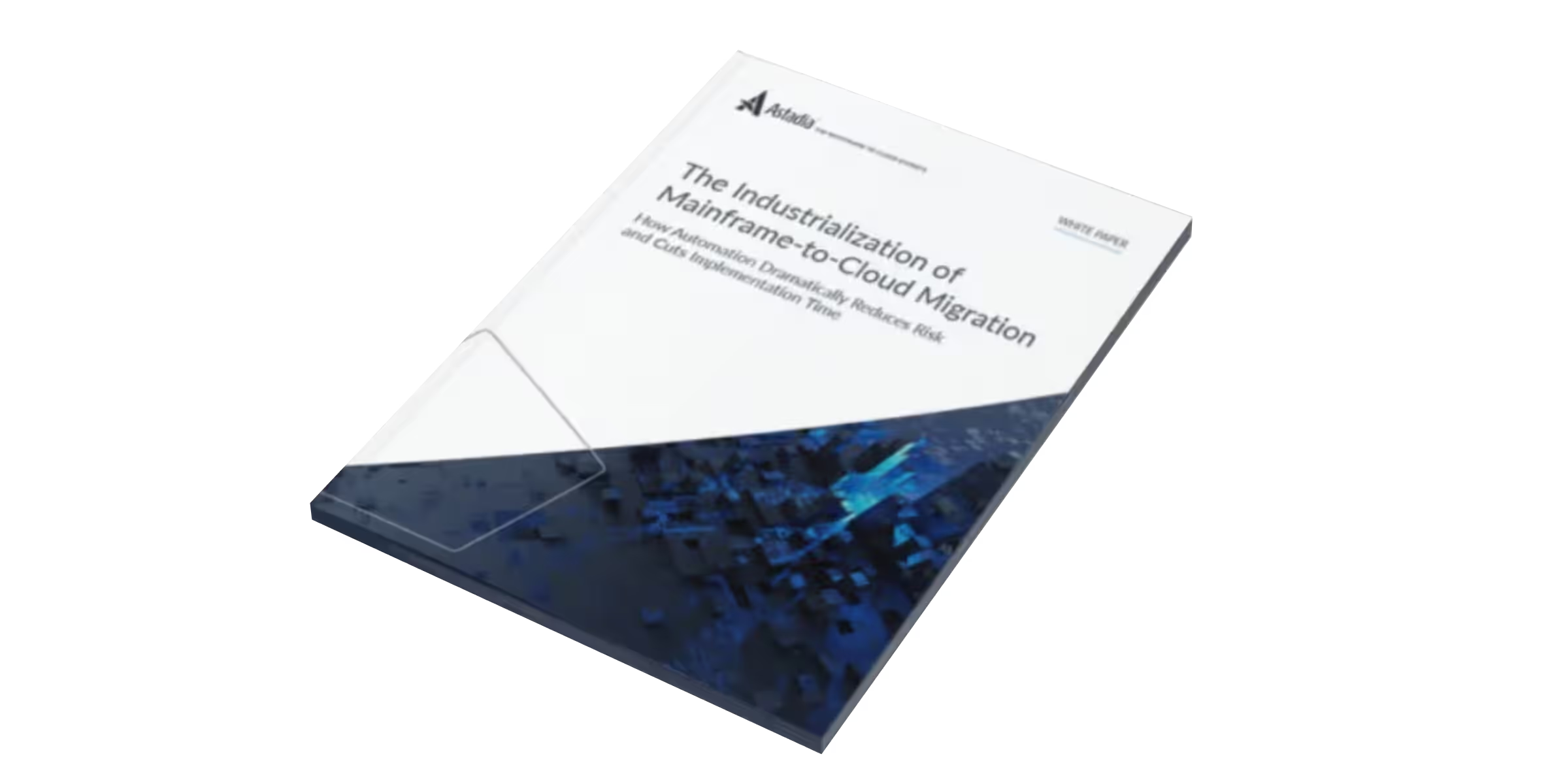As organizations seek to align with their unique industry challenges to adapt to a rapidly evolving digital landscape, mainframe modernization is gaining momentum. Manufacturing, distribution, and retail companies stand to benefit substantially from digital transformation, including location-based advertising, data analytics, and the internet of things (IoT). Yet organizations that continue to rely on mainframe systems run the risk of falling behind. As time marches on, maintaining legacy technology has become increasingly challenging and costly.
In this article, we’ll review some of the key benefits of mainframe modernization for companies in manufacturing, distribution, and retail.
#1: Reducing Costs
Modernization has the potential to reduce operating costs significantly by as much as 90%. While mainframes have long been valued for their scalability and efficiency, their value proposition has plummeted in recent years, as cloud computing has advanced, and as mainframe vendors have initiated steep price increases. It is not uncommon for organizations to allocate up to half of their budgets to legacy systems.
As organizations renew contracts with mainframe vendors, many are experiencing sticker shock. The upward trajectory in operating costs is unlikely to end anytime soon. Economic principles dictate that in order to remain profitable, mainframe vendors must raise prices for their diminishing pool of enterprise customers. Modernization provides an escape from mainframe vendor lock-in.
#2: Eliminating the Talent Shortage
The mainframe skills shortage has been an increasingly acute concern for companies in manufacturing, distribution, and retail. As an aging workforce has reached retirement age, very few college graduates are stepping up to take their place. A large percentage of mainframe professionals are over the age of 50, with a considerable number expected to retire within the next 5-10 years.
Today’s computer science grads are focused on newer technologies including AI, data science, and cloud computing. They’re familiar with object-oriented languages like C# and Java, and few have any interest in older programming languages or legacy database technology. Modernizing mainframes reduces dependence on a limited talent pool, making it easier to find skilled workers and ensuring that critical systems are maintained and optimized.
#3: Enhanced Compatibility with Emerging Technologies
Companies in manufacturing, distribution, and retail are increasingly turning to innovative technologies like location-based advertising, IoT devices,AI, and real-time analytics. These are yielding profound operational benefits and are improving these organizations’ capacity for data-driven decision-making.
Mainframe modernization opens the door to newer technologies that are more easily integrated with cloud-based applications. Enhanced data analysis, forecasting, and inventory management are just some of the benefits that ensure manufacturing, distribution, and retail businesses can remain agile and competitive in a rapidly changing world.
#4: Ensuring System and Data Security
Manufacturing, distribution, and retail companies are attractive targets for cybercriminals, largely because of their high public profile and the high volume of consumer data that many of them store and manage.
To maintain the security of operating systems and applications, businesses must stay up-to-date with software patches and updates that address security vulnerabilities. For companies running mainframe systems, this can be a challenge. If applications or even operating systems are no longer supported, newly discovered vulnerabilities will remain unpatched. Modernized systems, in contrast, conform to current best practices in cybersecurity, providing better protection against data breaches and ensuring compliance with regulations.
#5: Simplifying Disaster Recovery
Mainframe disaster recovery (DR) systems require a major investment, often calling for fully redundant hardware and real-time data replication. Given the mission-critical nature of most mainframe applications, this simply isn’t an area where companies can skimp. Unfortunately though, it’s inherently expensive.
Cloud backup and disaster recovery solutions, in contrast, are relatively inexpensive. They are cost-effective, convenient, and secure, eliminating the high expense of maintaining a private DR system and offering features that enable recovery with just a few clicks. That reduces complexity and risk, while keeping costs in check.
#6: Increasing Business Agility
Modernizing legacy systems enables businesses to increase their responsiveness, bring new innovations to market faster, and at a lower cost. This is essential in a rapidly changing business climate where agile startups often challenge established companies.
Modern systems provide scalability and flexibility that traditional mainframes cannot match. Companies can more easily adjust their operations according to market demands, such as scaling up production in peak seasons or expanding their distribution networks without being constrained by hardware limitations.
In retail, customer experience is paramount. Modernized systems enable companies to leverage data more effectively for personalized customer experiences, integrate omni channel strategies, and ensure smoother, faster transactions, both online and in-store.
Modernized mainframes can also enhance supply chain visibility and collaboration across manufacturing, distribution, and retail sectors. Companies can more easily share data with partners, predict supply chain disruptions, and respond to changes in demand, improving overall supply chain resilience.
Legacy environments simply don't integrate easily with modern technologies and cloud-enabled services. By moving mainframe applications to the cloud, companies can achieve faster time to market, improved performance, and greater innovation, supporting digital transformation initiatives.
Modernizing mainframe systems is no longer optional. The risks of staying on legacy systems are mounting, while the benefits of modernization are substantial. IT modernization delivers an impressive return on investment (ROI) and supports digital transformation efforts. Choosing the right IT modernization partner is crucial for success. With a flexible approach and proven track record, Astadia can help businesses in manufacturing, distribution, and retail transition to modern, cost-effective, and scalable systems.
Contact us today to learn more
Related news
Related white papers:
Let's Talk
Get in touch with our experts and find out how Astadia's range of tools and experience can support your team.
contact us now.avif)








